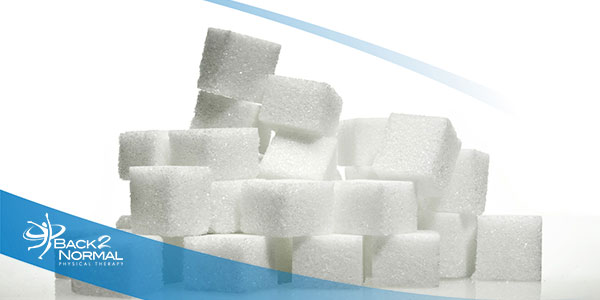
Long-term stress can lead to a variety of health problems. The body responds to stress by releasing stress hormones, making blood pressure, heart rate & blood sugar rise. It is important to identify your stressors & tackle them before they tackle you. Did you know that stress is a leading cause of sugar cravings and sugar is a leading cause of inflammation, joint pain, immune suppression, excess weight, low energy, and countless other stressors which in turn cause more sugar cravings?
STRESS IS EVERYWHERE – Identify your Stressors!
Uncomplimentary: Stress without benefit including environmental toxins, lack of sleep, psychological stress, and nutritional stress. 70% of uncomplimentary stress is nutritional.
Complimentary: Stress that stimulates mental or physical growth. Exercise is a complementary stressor that stimulates cellular regeneration. When you exercise, your body literally rebuilds itself with the foods you eat. Sugar is sweet but it’s made to crumble.
Production: Stress created by goal-setting such as training for a marathon or pulling an all-nighter for a big project at work. Production stress is necessary for achievement and positive in moderation.
What is NUTRITIONAL STRESS?
It’s the average North American diet, high in refined carbohydrates, like pasta, bread and sugared cereals, processed foods, reliance on dairy, and too much salt! This diet is also too low in complex carbohydrates, fiber, and essential fatty acids found in whole grains, legumes, seeds, nuts, fruits, and vegetables. When our bodies are bombarded with inadequate forms of nutrition, we place undue stress on our endocrine system — our bodies spend more time breaking down food and less time repairing, recovering, and transporting healthy oxygen-rich blood to our muscles and tissues.
10 TIPS TO FIGHT STRESS AND SUGAR CRAVINGS
#1: Eat Whole, Nutrient Rich Food. When your body is properly fed, you may experience increased energy, better sleep, weight regulation, increased happiness, better skin, and countless other benefits. Whole foods like sweet potatoes, squash, and other sweet vegetables can be beneficial in minimizing sugar cravings. They will satisfy your sweet tooth while being a nutrient-dense energy source for your body.
#2: Prepare On the Go. When you have a busy lifestyle or are on-the-go, keep healthy snacks on hand with you. Raw nuts, clean jerky, trail mix, dark chocolate (80% or darker), etc. are some great grab-n-go choices.
#3: Decrease Bio-Debt. Stimulants like coffee, energy drinks, and yes, sugar, are stressors and create “biological debt.” Similar to credit cards and your bank account, these substances borrow energy from the future. When not moderated carefully, you will eventually find yourself energetically bankrupt and seeking the next fix.
#4: Know Thyself. Understand your stressors and craving triggers and be prepared. If you always get a hankering for a sugary latte for that 3 pm pick-me-up, keep healthy snacks in your desk (see #2 for ideas), go for a walk, get some fresh air or call a friend.
#5 Get Moving. Being active helps balance blood sugar levels, boosts energy, and reduces tension, which will eliminate the need to self-medicate with sugar. Go for a run, bike ride, swim, take a yoga class or try the ElliptiGO.
#6: Oil Up. Pure, high-quality essential oils are ultra-concentrated plant products that can be a great addition to your diet. doTerra Slim and Sassy oil is a metabolic blend perfect for fighting cravings. Lemon can be detoxifying. Other spices/oils such as cinnamon, nutmeg, clove, and coriander naturally sweeten your food without the need for sugar.
#7: Stay Hydrated. Even mild dehydration is a significant physical stressor that can cause muscle cramping, false hunger, and cravings. No single formula fits everyone, so knowing more about your body’s need for fluids will help you estimate how much water to drink each day. It can vary depending upon gender, body mass, environmental conditions, and your workout routine to name a few. At least aim for the popular eight 8-ounce glasses of water per day.
#8: MELT Your Stress Away. The repetitive stress of daily living literally gets stuck in the connective tissue, which surrounds every joint, muscle, nerve, bone, and organ. “Stuck stress”
accumulates and causes dehydration in the connective tissue, which interferes with the nervous system’s ability to regulate itself and slows down the body’s natural healing process. Incorporate MELT, a self-care technique, into your daily routine to help decrease pain, inflammation, accumulated stress, improve sleep and overall wellbeing. Back 2 Normal offers one-on-one, small group classes on request and MELT products.
#9: Slumber Sweetly. Studies show that getting less than 6 hours of sleep can increase your risk of heart disease, obesity, diabetes, stroke, and depression, just to name a few. De-stress from the day’s events to get your best night of rest – try meditating, restorative yoga poses, take a warm bath with a few drops of doTerra Lavender oil, or write in a journal. An Aroma Touch, stress-reducing massage with doTerra oils is also incredibly helpful.
#10: Drink Green. Drinking green tea has been shown to stimulate the release of the hormone cholecystokinin, an appetite suppressant, and craving fighter.
To learn more about whole food, nutrient-rich diets and how to combat your stress and sugar cravings, check out our comprehensive wellness and rehabilitation services including our Nutritional Therapy, Body Reset and Regeneration Program, Performance for Life 10 Week Transformation Program, Aroma Touch, Integrative Health Coaching, Performance Coaching and more! Give us a call at (727) 362-6866 or browse our website for more information.
The Back 2 Normal blog is an educational resource written by Back 2 Normal employees and professional associates. Back 2 Normal bloggers are professionals who abide by the code of ethics outlined by their respective professional associations. The content published in blog posts represents the opinion of the individual author based on their expertise and experience. The content provided in this blog is for informational purposes only, does not constitute medical advice and should not be relied on for making personal health decisions.






